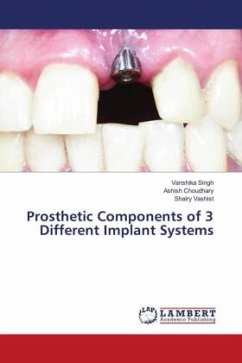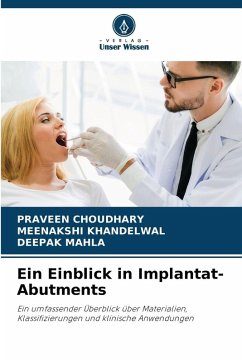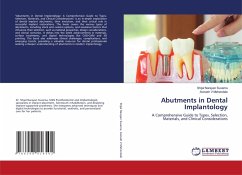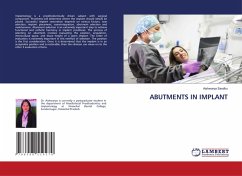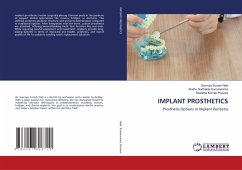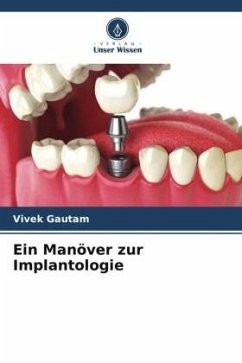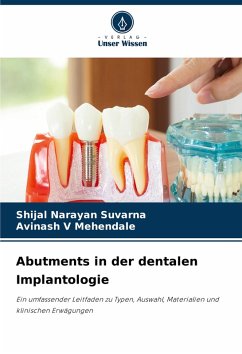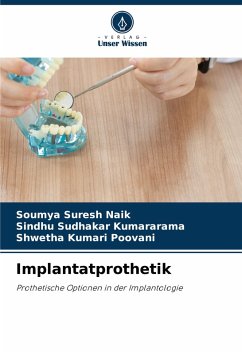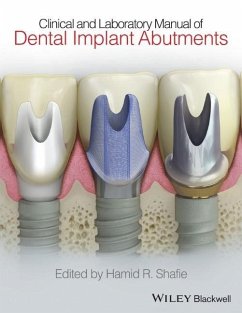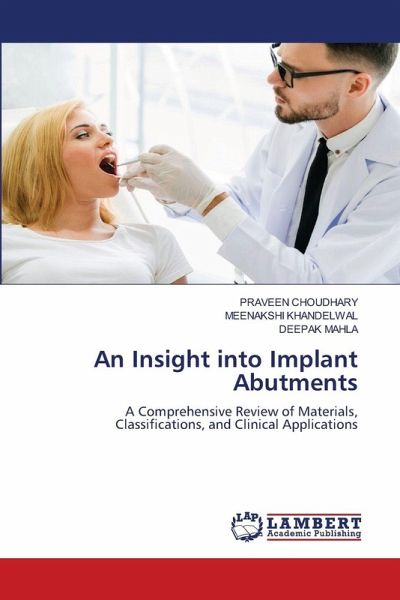
An Insight into Implant Abutments
A Comprehensive Review of Materials, Classifications, and Clinical Applications
Versandkostenfrei!
Versandfertig in 6-10 Tagen
29,99 €
inkl. MwSt.

PAYBACK Punkte
15 °P sammeln!
Implant abutments are critical components in dental implantology, serving as the link between the implant fixture and the prosthesis. Their selection directly influences functional stability, esthetics, and long-term success. Materials such as titanium provide superior strength and biocompatibility, while zirconia offers excellent esthetics and favorable soft tissue response. Hybrid abutments combine these advantages for balanced outcomes. Abutment design, connection type, and geometry affect stress distribution, peri-implant tissue health, and resistance to bacterial leakage. Recent advances ...
Implant abutments are critical components in dental implantology, serving as the link between the implant fixture and the prosthesis. Their selection directly influences functional stability, esthetics, and long-term success. Materials such as titanium provide superior strength and biocompatibility, while zirconia offers excellent esthetics and favorable soft tissue response. Hybrid abutments combine these advantages for balanced outcomes. Abutment design, connection type, and geometry affect stress distribution, peri-implant tissue health, and resistance to bacterial leakage. Recent advances in CAD/CAM and digital workflows allow for precise customization, improved emergence profiles, and enhanced esthetic integration. Internal and conical connections provide superior mechanical stability compared with older external systems. Proper case selection, soft tissue management, and meticulous planning remain essential. A multidisciplinary approach ensures predictable outcomes, reducedbiological complications, and improved patient satisfaction, reinforcing abutment selection as a cornerstone of successful implant therapy.



